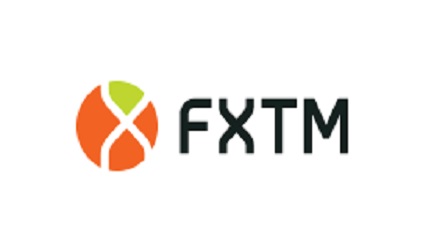E-Financial
Doha Failure Sparks Market Jitters- FXTM

An undeniable feeling of disappointed engulfed the global markets during trading on Monday following the unsuccessful Doha meeting on Sunday which erased any remaining credibility OPEC had to offer.
Despite Iran’s absence in the meeting, expectations were high for a freeze deal to be struck, but the visible dispute between Saudi Arabia and Iran sabotaged all efforts consequently causing WTI crude to plunge more than 5%. While realistically the effects of an output freeze would have had a minimal impact on the supply glut, even a symbolic gesture from OPEC to deal with the oversupply could have boosted optimism for future deals.
This string of events almost suggests that the major players in the cartel had no real intention of curbing production, but simply exploited the explosive levels of volatility to manufacture speculative boosts in prices based on false expectations.
Sentiment remains bearish towards oil, and with market participants losing hope in the ability of OPEC to work together in battling the excessive oversupply in the markets; bearish investors have been provided a platform to install another round of selling.
The last time oil prices sunk to the 13 year lows of $26.20 in February, oil producers felt the pinch and prices may need to trade back below $25 for desperation to kick in which could force a real output deal to be struck.
With the fundamentals of an unrelenting oversupply in the markets still present and concerns that demand may be waning, WTI crude remains heavily depressed.
Expectations are rapidly fading over the cartel working together and this should leave prices vulnerable in the short and medium term.
From a technical standpoint, the steep decline experienced in Monday’s session could provide enough momentum for WTI crude to trade back towards $38.
Stock Markets Sink
Global stock markets tumbled during trading on Monday following the disappointing Doha meeting that renewed a wave of risk aversion, consequently limiting investor risk appetite.
Asian markets were at the mercy of the meeting’s failure with previous gains relinquished as a re-established appetite for the safe-haven Japanese Yen dragged the Nikkei -3.4% lower. The bearish contagion from Asia ventured into Europe and may likely affect America as investors frantically scattered away from riskier assets to safe-havens.
With concerns over the state of the global economy already elevated, this Doha disappointment adds to the horrible mix of events that have periodically eroded global sentiment.
Oil prices may be poised for further declines as the markets drown in the oversupply and this should expose stock markets to more pain.
ECB Press Conference Looms
The Eurozone continues to be trapped in an ongoing battle with very low inflation levels, while tepid economic growth in Europe has left the European Central bank under noticeable pressure to take further action.
A catalytic combination of falling commodity prices and eroding global growth have obstructed the ECB’s 2% inflation targets with the central bank possibly trimming inflation forecasts once again amid the ongoing global woes. Sentiment remains bearish towards Europe and with the International Monetary Fund slashing Eurozone growth forecasts it seems likely that the ECB may unleash further stimulus measures to jumpstart growth.
A short period of Dollar appreciation may have created a higher low on the EURUSD at 1.1250 which could potentially offer an opportunity for bullish investors to install another round of buying momentum.
This pair remains remarkably bullish and the paradigm shift that has seen investors flock to the EUR, amid risk aversion, could act as an attribute which ensures that prices remain buoyed. From a technical standpoint, prices are trading back towards the daily 20 SMA while the MACD has crossed to the downside.
A breakout above 1.1300 could invite a further incline towards 1.140, on the condition that the 1.1250 support defends.
Commodity Spotlight – Gold
Gold bulls were offered a welcome boost following the Doha disappointment which renewed a wave of risk aversion and consequently encouraged investors to flock to safe-haven investments.
Despite the sharp declines in prices last week, the current change of developments coupled with ongoing concerns over slowing global growth could provide a foundation for bullish investors to install a fresh round of buying.
With ongoing Dollar vulnerability acting as the final ingredient for bulls to take the front seat once again, a solid break above $1240 should clear a path towards $1250.
From a technical standpoint, prices are trading above the daily 20 SMA while the MACD has crossed to the upside.
Potential resistance at $1240 could transform into a dynamic support for a drive up towards $1250.
Lukman Otunuga is a Research Analyst at FXTM
E-Financial
SERAP Drags CBN to Court over Alleged Failure to Disclose LG Allocations

Socio-Economic Rights and Accountability Project (SERAP) has filed a lawsuit against the Central Bank of Nigeria (CBN) “over the failure to disclose the details of any direct payments to the 774 local government councils in Nigeria including the amounts sent to each council.”

Kolawole Oluwadare, deputy director, SERAP, disclosed this in a statement on Sunday.
He said the group’s suit followed a landmark judgment by the Supreme Court last July, which held that allocations from the Federation Account with the CBN must be paid directly to democratically elected local government councils and that no governor has the power to keep, control or use the money meant for the councils.
In the suit number FHC/L/MSC/521/2025 filed last Friday at the Federal High Court, Lagos, SERAP is asking the court to “direct and compel the CBN to disclose the details of any direct payments to the 774 local government councils in Nigeria including the amounts sent to each council since the Supreme Court judgment.
The statement also noted that SERAP is also asking the court to “direct and compel the CBN to disclose whether any direct payment has been made from the Federation Account with the CBN to the local government councils in Rivers State and to explain the rationale for any such payment.”
“The CBN should make it possible for citizens to have access to the details of any direct payments to the 774 local government councils to ensure transparency and accountability, and judge whether the CBN and other agencies are complying with the Supreme Court judgment,” the group said in the suit.
“Granting the reliefs sought would go a long way in promoting the values and principles that underlie the Nigerian Constitution 1999 [as amended] and are inherent characteristics of an open democratic society.
“State governors are starving local governments of funds and putting them in peril, despite the Supreme Court’s binding orders. State governors’ blatant disregard for the Supreme Court’s orders undermines the integrity of the court and poses a direct challenge to the rule of law.
“The CBN ought to act in the public interest to ensure that the 774 councils in the country directly get their own money from the Federation Account, as ordered by the Supreme Court.
“The CBN also has the constitutional and statutory duty to ensure that no part of the Federation is governed contrary to the Nigerian Constitution or by anybody that is not constitutionally empowered to do so.
“The CBN should be facilitating compliance with the Supreme Court’s orders. If state governors get away with ignoring the court, it will undermine the ability of the bank to credibly perform its statutory duties.
“States and the FCT have continued to undermine and endanger the existence of local governments and their ability to effectively function as the third tier of government as envisioned under the Nigerian Constitution.
“The CBN has a constitutional and statutory duty to protect the allocations in the Federation Account and the public funds disbursed from that Account directly to each of the constitutionally recognized three tiers of government.”
E-Financial
NGX Clears Fidelity Bank MD of Insider Trading Allegations

Nigerian Exchange Group (NGX) has affirmed that the recent purchase of 18 million units of Fidelity Bank shares by its Managing Director/Chief Executive Officer, Dr. Nneka Onyeali-Ikpe, was conducted in full compliance with applicable regulations.

In a letter dated May 22, 2025, the regulator dismissed allegations of insider trading and the misuse of bank funds for the transaction stating “….Following the filing of the Bank’s 2025 Q1 UFS on 30 April 2025, the Directors and other insiders of the Bank became eligible to trade on the securities of the Bank after twenty-four (24) hours.
“Therefore, the share purchase transaction referenced by Sahara Reporters which occurred on 19 May 2025 was transacted during an open trading window and NGX RegCo is not aware of any other price sensitive information that the Bank is required to disclose which should hinder trades on the securities of the Bank by insiders.”
Fidelity Bank has subsequently issued a statement addressing the accusations, categorizing them as false, misleading, and maliciously intended to tarnish the reputation of both the bank and its MD/CEO, as well as to mislead the investment community and the general public.
Signed by the bank’s Divisional Head of Brand and Communications, Dr Meksley Nwagboh, the statement clarified that Fidelity Bank was compelled to respond to the erroneous article published on May 21, 2025.
“As a publicly quoted company regulated by the NGX and subject to the Listing Rules of the NGX and the Securities and Exchange Commission (SEC) regulations, we unequivocally confirm that neither the Bank nor its MD/CEO has ever engaged in insider trading.”
Dr Nwagboh further emphasized that the MD/CEO personally funded the share purchase and did not utilize bank funds or take a loan for the transaction. The statement reaffirmed that the transaction was conducted in strict adherence to the Listing Rules and insider trading regulations governing publicly traded companies.
E-Financial
CBN Introduces AML to Fight Financial Terrorism, Gives Banks Deadline

Central Bank of Nigeria (CBN) has directed all financial institutions to implement real-time transaction alert systems as part of enhanced anti-money laundering (AML) compliance.

The directive was conveyed in a letter dated May 20, 2025, with reference number BSD/DIR/CON/AML/018/033, and titled “Exposure of Draft Baseline Standards for Automated Anti-Money Laundering (AML) Solutions – Request for Comments.”
The letter, signed by Olubukola Akinwunmi, director of banking supervision, was addressed to all financial institutions and outlines the regulatory expectations for modern AML compliance.
The apex bank emphasised that the initiative is part of its broader commitment to safeguarding the integrity and stability of Nigeria’s financial system, especially in the face of rapid digital transformation and the rise of innovative financial products.
The draft standards, which are now open to feedback from stakeholders, are designed to promote operational efficiency and ensure compliance with Anti-Money Laundering, Combating the Financing of Terrorism, and Counter-Proliferation Financing (AML/CFT/CPF) regulations.
“This standard is informed by a comprehensive assessment of existing solutions within the industry and aligns with global best practices, including recommendations by the Financial Action Task Force (FATF),” the document stated.
According to the CBN, the draft baseline standards are developed with key objectives in mind.
These include strengthening the AML capabilities of financial institutions through advanced, technology-driven solutions; encouraging the adoption of emerging technologies for real-time detection and reporting of suspicious transactions; reducing the inefficiencies associated with manual compliance processes; and ensuring alignment with evolving regulatory expectations both locally and internationally.
The draft document is available for download on the official website of the Central Bank of Nigeria, and all stakeholders have been encouraged to review and provide feedback.
“We look forward to receiving your valuable feedback,” the letter noted, highlighting the collaborative approach to shaping the final version of the standards.
Among the critical requirements outlined in the draft are real-time alerts for transactions considered high risk.
These include cross-border transactions, excessive cash deposits, cryptocurrency-related dealings, and other activities flagged under existing AML regulations.
The document specifies that the time taken to review and act on such alerts must not exceed a predetermined timeline, reinforcing the need for swift response and decision-making.
The CBN mandates that financial institutions implement transaction monitoring systems capable of supporting multiple risk scenarios.
These systems should use configurable filtration rules and customer segmentation techniques to effectively detect suspicious behavior. Institutions are also required to conduct regular stress testing and system validation exercises to minimise false positives.
“Each institution must define a predetermined threshold for false positives and ensure that the rate remains below this threshold,” the document stated, underlining the importance of maintaining a balance between alert sensitivity and accuracy.
The draft also mandates that AML solutions incorporate artificial intelligence and machine learning (AI/ML) capabilities.
These technologies should support anomaly detection, behavioral pattern recognition, automated risk scoring, and adaptive learning based on insights from previously flagged alerts and their resolutions.
The aim is to ensure that the systems not only detect suspicious activity but also evolve over time to become more efficient and accurate.
Real-time access to Customer Due Diligence (CDD), Know Your Customer (KYC), and Know Your Customer’s Business (KYB) data is another essential feature prescribed in the draft standards.
Financial institutions are expected to automate customer onboarding processes with real-time identification and verification in line with existing AML/CFT/CPF regulations.
This includes integration with Bank Verification Number (BVN) and National Identification Number (NIN) databases to ensure instant verification.
Moreover, the draft outlines the need for comprehensive KYC and KYB functionalities.
These must include automated customer risk profiling, transaction behaviour analysis, historical data tracking, and the inclusion of various risk factors derived from money laundering, terrorist financing, and proliferation financing risk assessments and typologies.
The solutions must also enable continuous classification of customers into risk categories to facilitate more targeted and effective risk management.
The Central Bank’s move to expose the draft for industry-wide input reflects its intention to build a robust, technologically advanced AML compliance culture across Nigerian financial institutions.
It signals a significant step towards enhancing transparency, operational efficiency, and international alignment in Nigeria’s financial regulatory environment.

 E-Financial2 days ago
E-Financial2 days agoNGX Clears Fidelity Bank MD of Insider Trading Allegations

 News2 days ago
News2 days agoToll Collection on Lagos-Calabar Highway Begins December

 Telecom5 hours ago
Telecom5 hours agoNCC Orders Telcos to Compensate Subscribers for Outages More than 24 Hours

 E-Financial5 hours ago
E-Financial5 hours agoSERAP Drags CBN to Court over Alleged Failure to Disclose LG Allocations

 Telecom5 hours ago
Telecom5 hours agoTelecom Subscribers Decline By 43m in One Year

 E-Business5 hours ago
E-Business5 hours agoNigeria Launches Cybercrime Team with Commonwealth, UK Support

 General News5 hours ago
General News5 hours agoHEDA Sues FG, Oil Giants over Alleged Unlawful Oil Licence Transfer

 Telecom5 hours ago
Telecom5 hours agoIHS Nigeria, NSCDC Partner to Protect Telecoms Infrastructure











